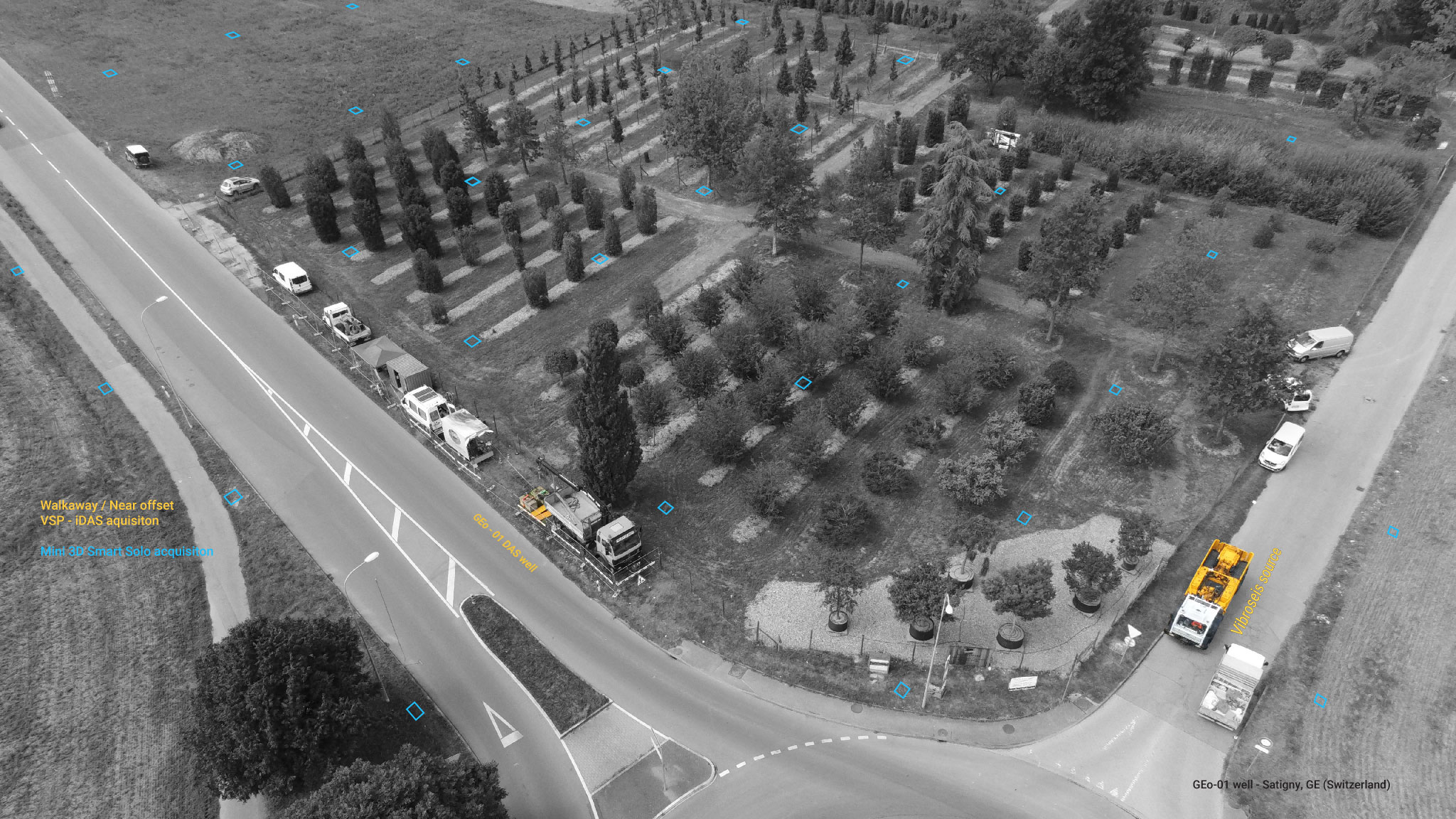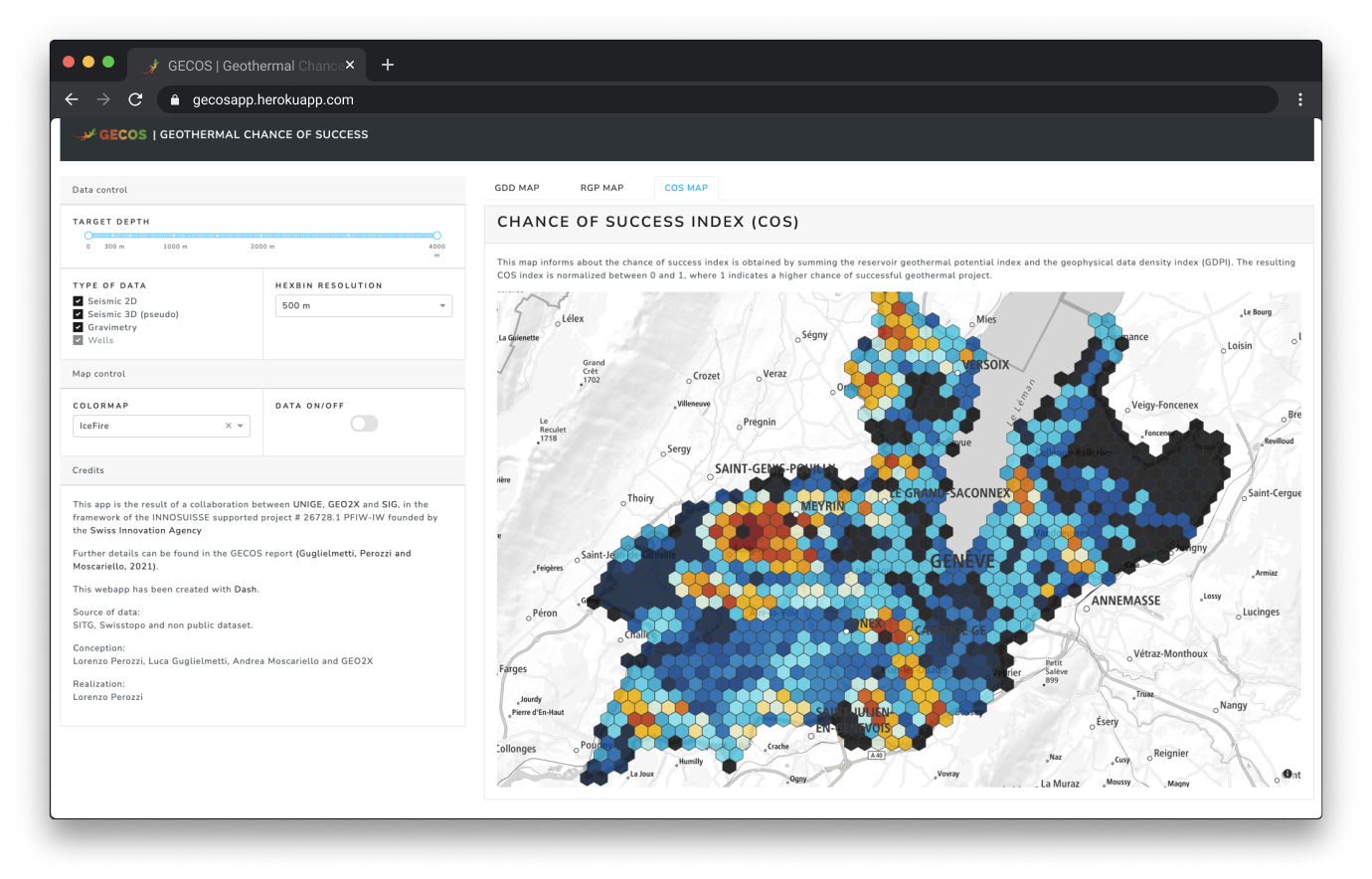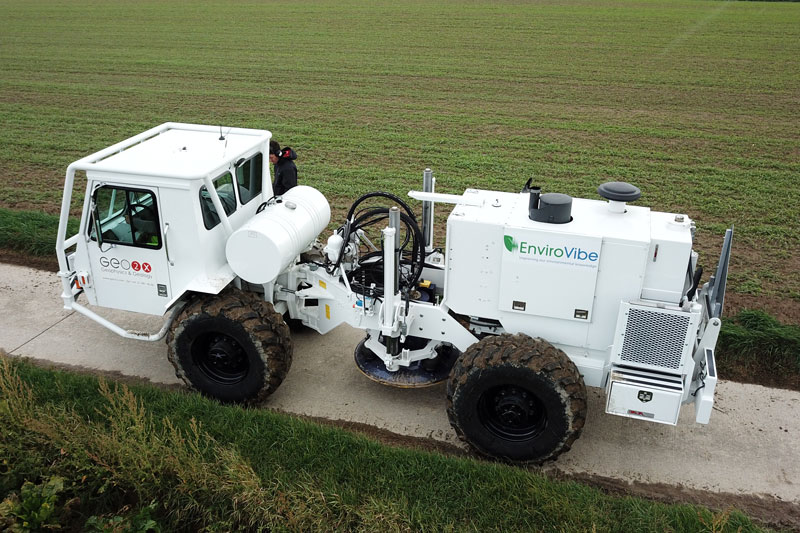GECOS (Geothermal Energy Chance of Success) is a INNOSUISSE funded project which focusses on deep geothermal exploration and development of geothermal UTES projects and is based on three main pillars:
Reduction of subsurface uncertainty
Acquisition of cost-effective, quick and high resolution geophysical data such as 3D DAS VSP, S-waves seismic and high resolution gravity can help to improve the understanding of the subsurface. invisibletext
Mitigation of the risk invisibletext
Geostatistical and machine learning approach are perfectly shaped to integrate and analyse different types of geodata to lower the uncertainty and mitigate the risk of developing geothermal energy projects.
Reduction of the costs invisibletext
New high-resolution acquisition and integration of data form different sources using novatory methods such machine learning are allows to reduce the costs of developing geothermal projects. invisibletext
Workflow
Early stage workflow
This workflow can be replicated at any stage of a geothermal project. At the early stages when only scarce data are available, during exploration when new data will be collected and when new large investiments (i.e. 3D seismic and drilling) need to be planned.
Production stage workflow
This workflow can also be replicated during production to monitor the reservoir and eventually design new drilling operations.

GECOS web app
Explore the data density and GECOS index density map over the Geneva Canton.
Available documents
The following documents are the pre-final versions of the deliverables of the GECOS project contain confidential and proprietary business information of the GECOS team. These materials is protected by a password. Please contact us if you are interested on the documents.










